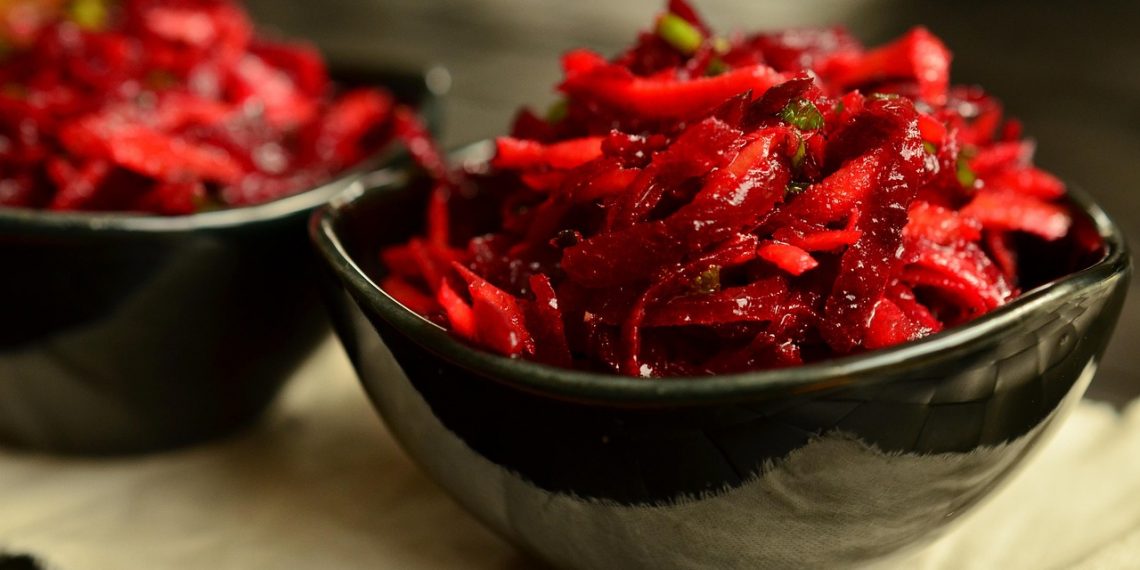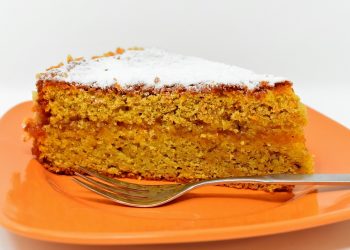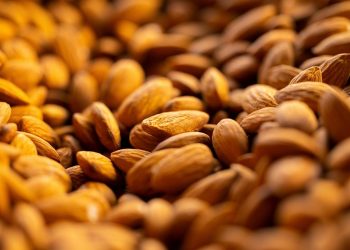Did you know that beetroot isn’t just a vibrant addition to your plate but also a potential ally in managing blood sugar levels? It’s true! This root vegetable, with its earthy sweetness and striking color, has been gaining attention for its health benefits, particularly for those concerned about blood sugar control. So, if you’re looking for ways to incorporate this superfood into your diet, you’ve come to the right place. Let’s dive into five delectable beetroot recipes that can help balance blood sugar levels.
Why Beetroot?
Before we jump into the recipes, let’s chat a bit about why beetroot is a beneficial choice for managing blood sugar. Beetroot is low in calories and high in fiber, which can help slow down glucose absorption. It’s also packed with antioxidants and nitrates that may improve blood flow and lower blood pressure. Plus, the natural sweetness can satisfy sugar cravings without spiking your blood sugar levels.
1. Beetroot and Quinoa Salad
Let’s kick things off with a refreshing beetroot and quinoa salad. This dish is not just colorful; it’s also bursting with nutrients.
Ingredients:
- 1 cup cooked quinoa
- 2 medium-sized beetroots, roasted and diced
- 1/2 cup feta cheese, crumbled (optional)
- 1/4 cup walnuts, chopped
- 2 cups arugula or spinach
- 2 tablespoons olive oil
- 1 tablespoon balsamic vinegar
- Salt and pepper to taste
Instructions:
- Roast the Beetroots: Preheat your oven to 400°F (200°C). Wrap the beetroots in foil and roast for about 45 minutes or until tender. Once cooled, peel and dice them.
- Prepare the Quinoa: Cook quinoa according to package instructions. Let it cool.
- Mix Ingredients: In a large bowl, combine the quinoa, roasted beetroots, arugula, walnuts, and feta cheese.
- Dress the Salad: Whisk together olive oil, balsamic vinegar, salt, and pepper. Drizzle over the salad and toss gently.
Pros:
- High in fiber and protein.
- Can be made ahead of time and stored in the fridge.
Cons:
- If you’re sensitive to high-fiber foods, start with smaller portions.
2. Beetroot Hummus
Who doesn’t love hummus? This beetroot version is not only eye-catching but also adds a unique twist to your snack time.
Ingredients:
- 1 can (15 oz) chickpeas, drained and rinsed
- 1 medium-sized beetroot, cooked and diced
- 2 tablespoons tahini
- 2 tablespoons olive oil
- 1 garlic clove
- Juice of 1 lemon
- Salt to taste
Instructions:
- Blend Ingredients: In a food processor, combine chickpeas, beetroot, tahini, olive oil, garlic, lemon juice, and salt.
- Process Until Smooth: Blend until smooth, adding water if needed to reach desired consistency.
- Serve: Transfer to a bowl and drizzle with olive oil. Enjoy with veggies, whole-grain crackers, or pita bread.
Pros:
- Packed with protein and fiber.
- Great for parties or as a healthy snack.
Cons:
- May stain your kitchen tools and surfaces, so be careful!
3. Beetroot Smoothie
For those busy mornings, a beetroot smoothie can be both satisfying and nutritious. It’s like a health boost in a glass!
Ingredients:
- 1 small cooked beetroot, peeled and chopped
- 1 banana
- 1/2 cup Greek yogurt
- 1 cup spinach
- 1 cup almond milk (or any milk of choice)
- 1 tablespoon honey or maple syrup (optional)
Instructions:
- Blend Ingredients: In a blender, combine the beetroot, banana, Greek yogurt, spinach, almond milk, and sweetener if using.
- Blend Until Smooth: Process until the mixture is creamy and smooth.
- Serve Immediately: Pour into a glass and enjoy!
Pros:
- A quick and easy breakfast option.
- Can be customized with other fruits or greens.
Cons:
- The earthy taste of beetroot might not appeal to everyone at first.
4. Beetroot Soup
If you’re in the mood for something warm and comforting, beetroot soup is a fantastic choice. It’s rich in flavor and nutrients.
Ingredients:
- 2 medium beetroots, peeled and diced
- 1 onion, chopped
- 2 cloves garlic, minced
- 4 cups vegetable broth
- 1 tablespoon olive oil
- Salt and pepper to taste
- Fresh dill or parsley for garnish
Instructions:
- Sauté Onions and Garlic: In a large pot, heat olive oil over medium heat. Add onions and garlic, cooking until softened.
- Add Beetroots and Broth: Stir in the diced beetroots and vegetable broth. Bring to a boil, then reduce to a simmer for about 30 minutes until beets are tender.
- Blend the Soup: Use an immersion blender to puree the soup until smooth. Season with salt and pepper.
- Serve: Ladle into bowls and garnish with fresh herbs.
Pros:
- High in antioxidants and very filling.
- Can be stored in the fridge for several days.
Cons:
- Takes some time to cook, but it’s mostly hands-off.
5. Beetroot and Chickpea Patties
These patties make for a delicious meal or snack. They’re easy to prepare and can be served in various ways.
Ingredients:
- 1 cup cooked beetroot, mashed
- 1 cup cooked chickpeas, mashed
- 1/2 cup breadcrumbs
- 1/4 cup onion, finely chopped
- 1 teaspoon cumin
- Salt and pepper to taste
- Olive oil for frying
Instructions:
- Mix Ingredients: In a bowl, combine the mashed beetroot, chickpeas, breadcrumbs, onion, cumin, salt, and pepper. Mix well until combined.
- Form Patties: Shape the mixture into small patties.
- Cook Patties: Heat olive oil in a skillet over medium heat. Fry the patties for about 4-5 minutes on each side or until golden brown.
- Serve: Enjoy with a yogurt dip or in a burger bun.
Pros:
- Versatile and can be served in various ways.
- High in protein and fiber.
Cons:
- May fall apart if not enough breadcrumbs are used.
FAQs
1. Can beetroot help lower blood sugar levels?
Yes, beetroot is low in calories and high in fiber, which can help manage blood sugar levels. The nitrates in beetroot may also improve blood flow and insulin sensitivity.
2. How often should I eat beetroot?
Incorporating beetroot into your diet a few times a week can be beneficial, but it’s essential to balance it with other vegetables and nutrients.
3. Are there any side effects of eating beetroot?
While beetroot is generally safe for most people, some may experience digestive issues if consumed in large amounts due to its high fiber content. It can also cause a temporary reddish tint in urine, known as beeturia.
4. Can I consume beetroot if I have diabetes?
Yes, beetroot can be a healthy addition to a diabetic diet. However, it’s always best to consult with a healthcare provider for personalized advice.
Conclusion
Incorporating beetroot into your meals doesn’t have to be a chore. These delicious recipes can help you enjoy the health benefits of beetroot while also tantalizing your taste buds. Whether you’re whipping up a refreshing salad, a hearty soup, or some tasty patties, you’re not just treating yourself to something yummy — you’re also taking a step toward better blood sugar management.
So, what are you waiting for? Grab some beetroots and start experimenting in the kitchen! Remember, the journey to better health can be both delicious and enjoyable.
This article is for educational purposes only and is not a substitute for professional medical advice. Always consult a qualified healthcare provider before making changes to your health routine.
References
- Kaur, G., & Gupta, R. (2020). Beetroot: A functional food with potential health benefits. Journal of Food Science and Technology, 57(10), 3823-3833. https://doi.org/10.1007/s11483-020-01648-1
- Mayo Clinic. (2021). Beetroot for blood pressure: What you need to know. Retrieved from https://www.mayoclinic.org/
- Harvard Health Publishing. (2021). The health benefits of beets. Retrieved from https://www.health.harvard.edu/
Get Your FREE Natural Health Guide!
Subscribe now and receive our exclusive ebook packed with natural health tips, practical wellness advice, and easy lifestyle changes — delivered straight to your inbox.














